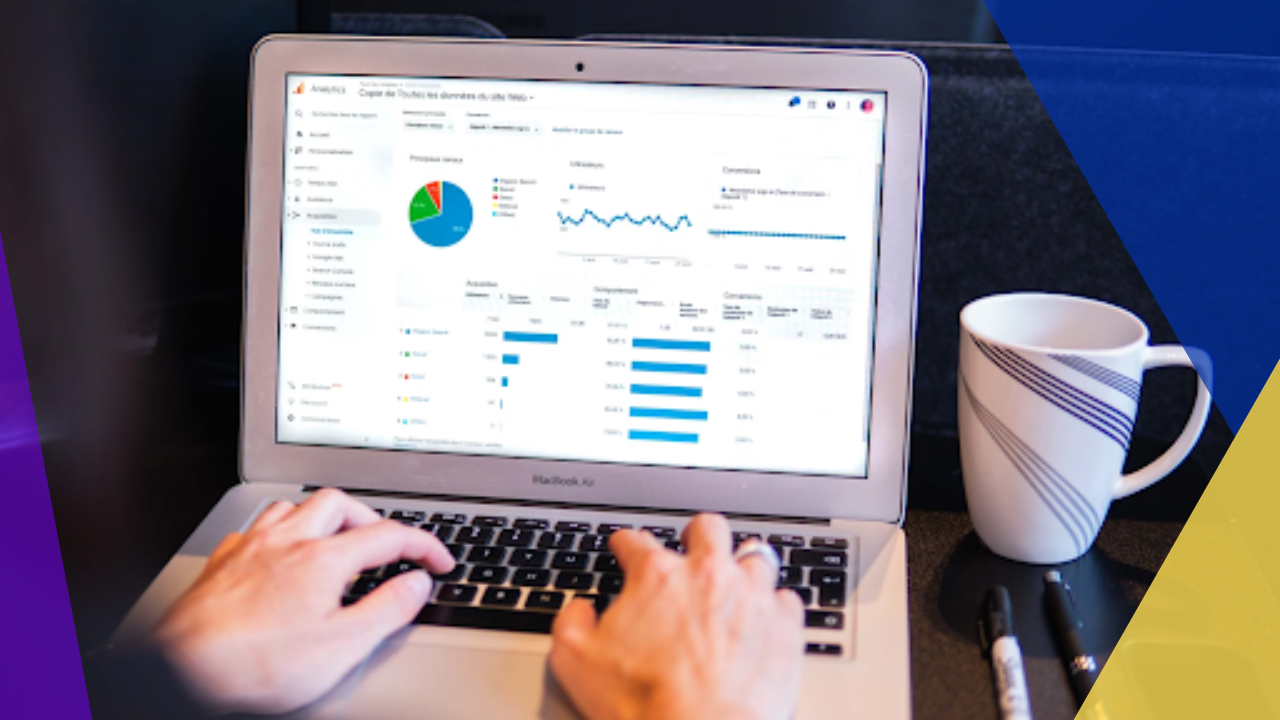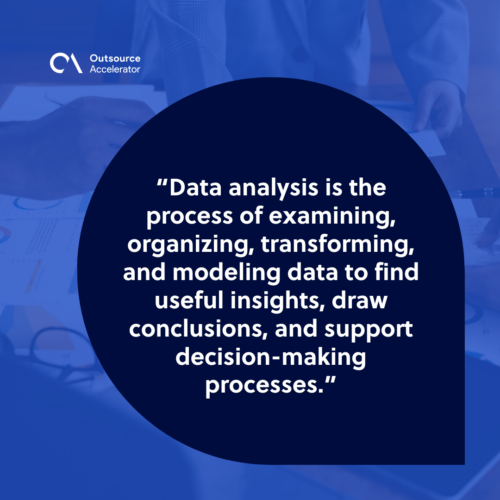The data advantage: The impact of data analysis in running your business

Today’s business landscape is changing and growing even more competitive. The rapid development and adoption of various new technologies have helped businesses across multiple industries find novel ways to grow and optimize their operations.
One of the methods businesses can use to improve their management practices is data analytics. In 2022, the big data analytics market reached a value of $271.83 billion globally.
The availability of big data and efficient data collection technologies has allowed businesses to apply it to their daily operations. Read below to learn more about data analytics and how it can help you run your business.
Understanding data analysis
Data analysis is the process of examining, organizing, transforming, and modeling data to find useful insights, draw conclusions, and support decision-making processes. It involves using multiple techniques and tools to analyze and interpret data, uncover patterns, and extract meaningful insights.
This process of extracting meaning enables individuals and organizations to make more informed and evidence-backed decisions.

Working with large sets of information requires a systematic process to ensure accuracy and minimize mistakes that might affect the result. Here is an overview of the basic steps to analyzing data:
1. Requirement gathering
Before diving into data analysis, it’s essential to define the project’s goals and requirements clearly. This step allows you to identify the information you need to seek and collect.
Understanding the purpose of the analysis, the questions you need to answer, and your desired outcomes helps set the course of the entire process.
2. Data collection
Once you establish the requirements for your data analysis project, it’s time to gather relevant data. This step may involve accessing databases, extracting information from spreadsheets, or using other sources. You can also manually collect data through surveys, interviews, and questionnaires.
Review your data sources and research instruments before analysis to ensure they are well-made and relevant. The quality and relevance of the collected data can greatly impact the accuracy of the analysis.
3. Data cleaning
No matter how careful you might be during the data gathering and collection process, you will still need to assess and clean your data. Data is rarely perfect. It often contains errors, missing values, and inconsistencies.
Data cleaning, sometimes known as data cleansing or scrubbing, refers to the process of identifying and correcting these issues. Cleaning the data ensures its reliability and integrity, providing a solid foundation for accurate analysis.
4. Data analysis
Once you’ve cleaned and organized your data, analysis can begin. This step involves applying various statistical and machine-learning techniques to find patterns, relationships, and trends within the dataset.
Depending on your project goals, you can explore different data analysis types and techniques, such as the following:
- Descriptive analysis. This type focuses on summarizing and presenting the main features of a dataset. Visualizations, such as charts and graphs, play a key role in communicating and conveying these features and characteristics.
- Diagnostic analysis. This type delves into understanding the cause-and-effect relationships within the data. It aims to find and understand the reasons behind specific patterns or outcomes. Diagnostic analysis helps companies identify the root causes of particular observations and inform strategies for improvement.
- Predictive analysis. As the name suggests, predictive analysis uses historical data to build models forecasting future trends or outcomes. You can use this analysis to anticipate customer behavior, market trends, and various factors affecting strategic planning.
- Prescriptive analysis. Prescriptive analysis goes beyond prediction and recommends actions. By evaluating various scenarios and outcomes, this analysis guides business decision-makers on the best course of action to achieve their goals.
5. Data interpretation
Interpreting the results of your data analysis process is a critical step in getting actionable insights. This step entails understanding the implications of the patterns and trends you have identified during analysis.
Contextualize your findings within your company’s current situation and broader goals. Doing so can help your business and relevant stakeholders make more informed decisions based on data-driven insights.
6. Data visualization
An analysis made of large blocks of text and numbers can be challenging to understand and communicate to various stakeholders. Data visualization can be a helpful step to make your analysis more accessible and understandable.
Charts, graphs, and other visual representations help convey complex information clearly and concisely. Effective visualization enhances communication and understanding among stakeholders, which helps with better decision-making.

Benefits of data analysis in business management
Data analysis has proven vital in business, especially for informed decision-making and strategic planning. This process helps companies unlock several benefits that can significantly impact business management.
Here are some key advantages that data analysis can bring to your company:
Personalizing customer experience
One of the most significant advantages of data analysis in business management is the ability to personalize the customer experience. Personalization is becoming a bigger requirement for businesses to attract customers and retain brand loyalty.
Organizations can tailor their products, services, and marketing strategies to meet customer needs by analyzing customer behavior, preferences, and feedback. This personalization enhances customer satisfaction and fosters customer loyalty, driving long-term business success.
Streamlining internal processes
Data analysis can be pivotal in optimizing internal processes within your business or organization. Analyzing operational data allows organizations to identify bottlenecks, inefficiencies, and areas for improvement.
Businesses can use this information to streamline their processes. Streamlining internal workflows increases productivity, reduces operational costs, and provides other benefits. As a result, your business can be more agile, responsive, and capable of adapting to changing market conditions.
Identifying business opportunities
Businesses can also use data analysis to look outward and identify new business opportunities they can use to expand. Analyzing market trends, consumer behavior, and competitor activities helps organizations identify emerging opportunities for further growth and innovation.
This proactive approach helps brands capitalize on market trends, launch new products, or enter untapped markets, which can give them a competitive edge.
Mitigating risks
Operating a business always involves a certain degree of risk. Business owners and managers must always be aware of these risks and set measures to minimize or respond to them.
Data analysis allows organizations to identify potential risks by evaluating historical data and predicting future scenarios. These scenarios could include financial risks, market fluctuations, or even external threats.
You can implement proactive risk mitigation strategies with the insights your business can gain through data analysis. These strategies aid your resilience and ability to navigate challenges effectively.

Enhancing security
Data breaches and cyber threats are pertinent concerns for businesses and individuals. Last year, 1,802 cases of data compromises were recorded in the United States. Over 422 million individuals fell victim to these compromises, which included data breaches, exposures, and leakages.
Data analysis plays a key role in enhancing security measures. By continuously monitoring and analyzing data for unusual patterns or activities, your business can promptly identify and respond to potential security threats.
This proactive approach allows you to safeguard sensitive information, protect the integrity of business operations, and build trust among customers and stakeholders.
Leverage data for optimization
Data analysis offers several advantages to businesses. It can give you the tools you need to thrive in competitive markets. Understanding the sequential nature of this process allows you to harness these benefits to the fullest extent.
A systematic approach and comprehensive understanding of the data analysis process can help you gain a competitive advantage and foster long-term success in your industry.







 Independent
Independent




